Feast and Famine
Load Balancing 101 The oil and gas industry is brutal on small business. One minute you can be waiting for the phone to ring while
Welcome to our Learning Centre!
Here you will find articles, videos, and images that will help you to better understand our products and services and how these products will help to solve your challenges.
Take a look around, and feel free to comment and ask questions. This area is here for you and our goal is to make it relevant and useful.
Thanks for watching.
Andy Kveps
If you have a challenge or a problem that keeps you up at night – we can help.
We have over three decades of engineering design and development experience.
Aaki has built solutions for the oil and gas, forestry, mining, agriculture, automotive industries- you name it and we have worked in it.
Our resources cover the gamut of engineering and software disciplines: microelectronics, mechanical, SCADA (before it was called the IoT), molding, machining, and all kinds of fabrication.
Our products offer superior quality and excellent service while understanding the demands and challenges of the industry.
Aaki is committed to nurturing a culture that strives for the relentless pursuit of value to our customers through the quality, service and integrity of our people and products.
Established in 1986 by its current principal, Aaki Corp has been providing design, development and manufacturing services to a wide range of industries. As Aaki’s reputation for service and quality offerings grew, employees and consultants were added to the group to provide depth and breadth to the company’s capabilities.
Aaki offers services and expertise in a diverse cross-section of industries including: oil and gas, seismic, mining, surveying, forestry, agriculture, and automotive.
Clientele vary in size from one man start-up companies to multi-billion dollar corporations spanning the globe.
On a solid foundation of electrical and mechanical engineering disciplines, Aaki’s services have expanded to include product lines in Motor Shaft Grounding, Anti-Static Bonding Spools, Overfill Prevention and grounding, Clamp and Cable Assemblies, Seismic Components, Corrosion Testing Coupons, MWD components, Mechanical Design, Machining and Fabrication, Electronics Assembly, and Plastic Injection Molding.
At Aaki, we strive to find a better way.
It starts with a continuous cycle of creative and innovative designs and improvements, forged using superior materials, to create a product that is carried to the customer with best in class service, all with the goal to provide the best value possible.
And when we have achieved that,
We start again, looking for a better way.
Quality, Service, Integrity and Value. The Aaki way.
Load Balancing 101 The oil and gas industry is brutal on small business. One minute you can be waiting for the phone to ring while
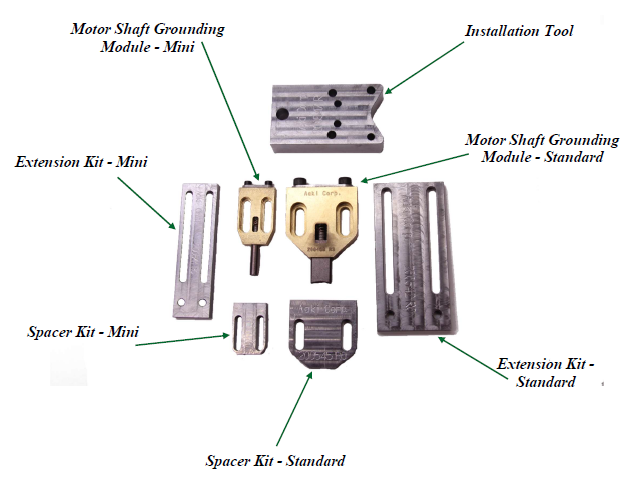
Aaki Releases New Motor Shaft Grounding Product Line Many of today’s electric motor applications require the ability for the speed of the motor to be

Aaki Goes to Calgary GPS 2019 & Reports Back! As long-time attendees of the Global Petroleum Show, Aaki Corp was excited to see what this
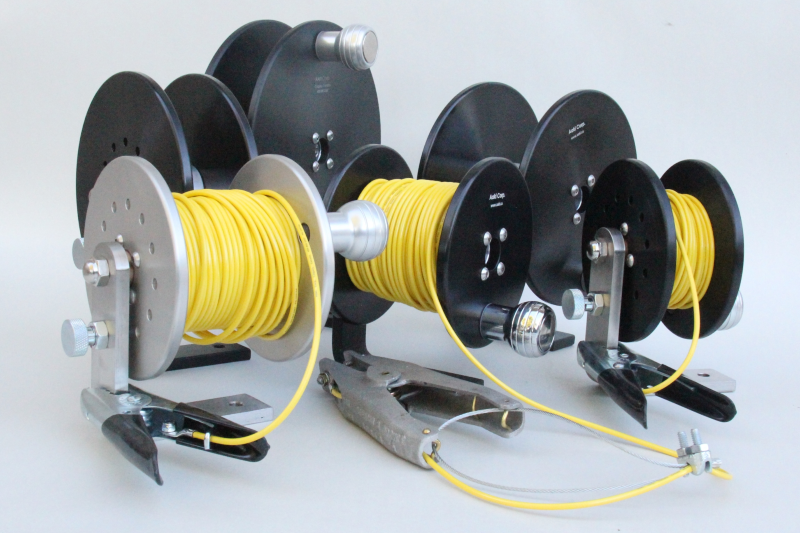
Bonding Systems When working in close proximity to explosive fumes and vapors, static electricity can cause these substances to ignite, often with disastrous consequences. Static
Operators The word strikes fear into the hearts and minds of business accountants and MBAs alike. A group of independent thinkers that, with little or
Triac enters the machining business Triac’s primary focus was the design of equipment for the oil and gas industry. However, we found that although we

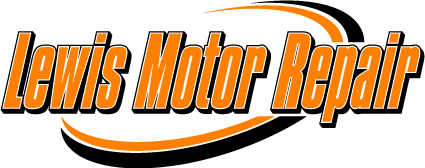
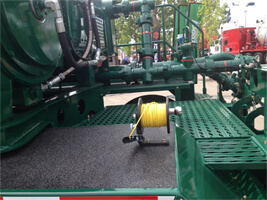
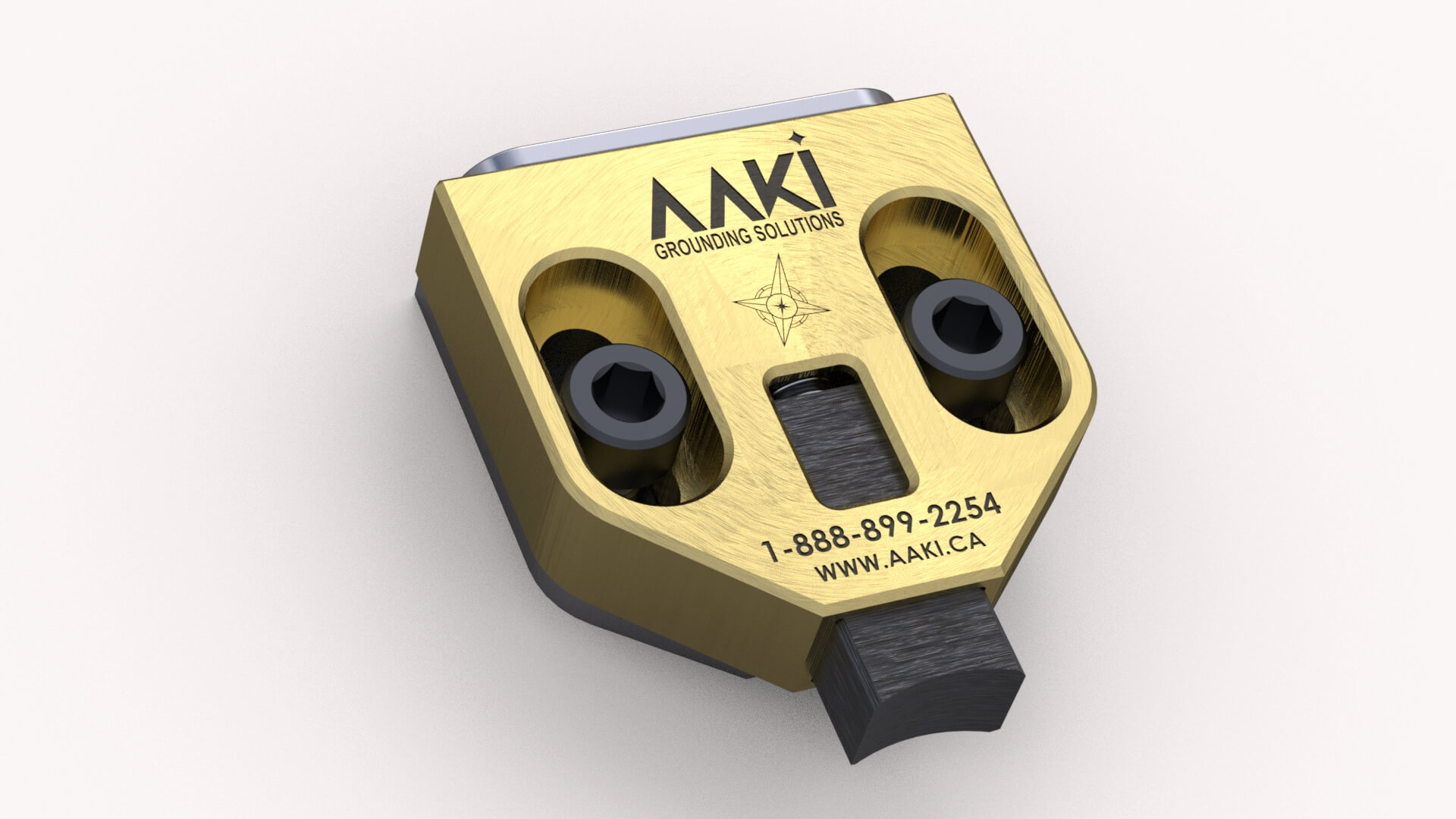
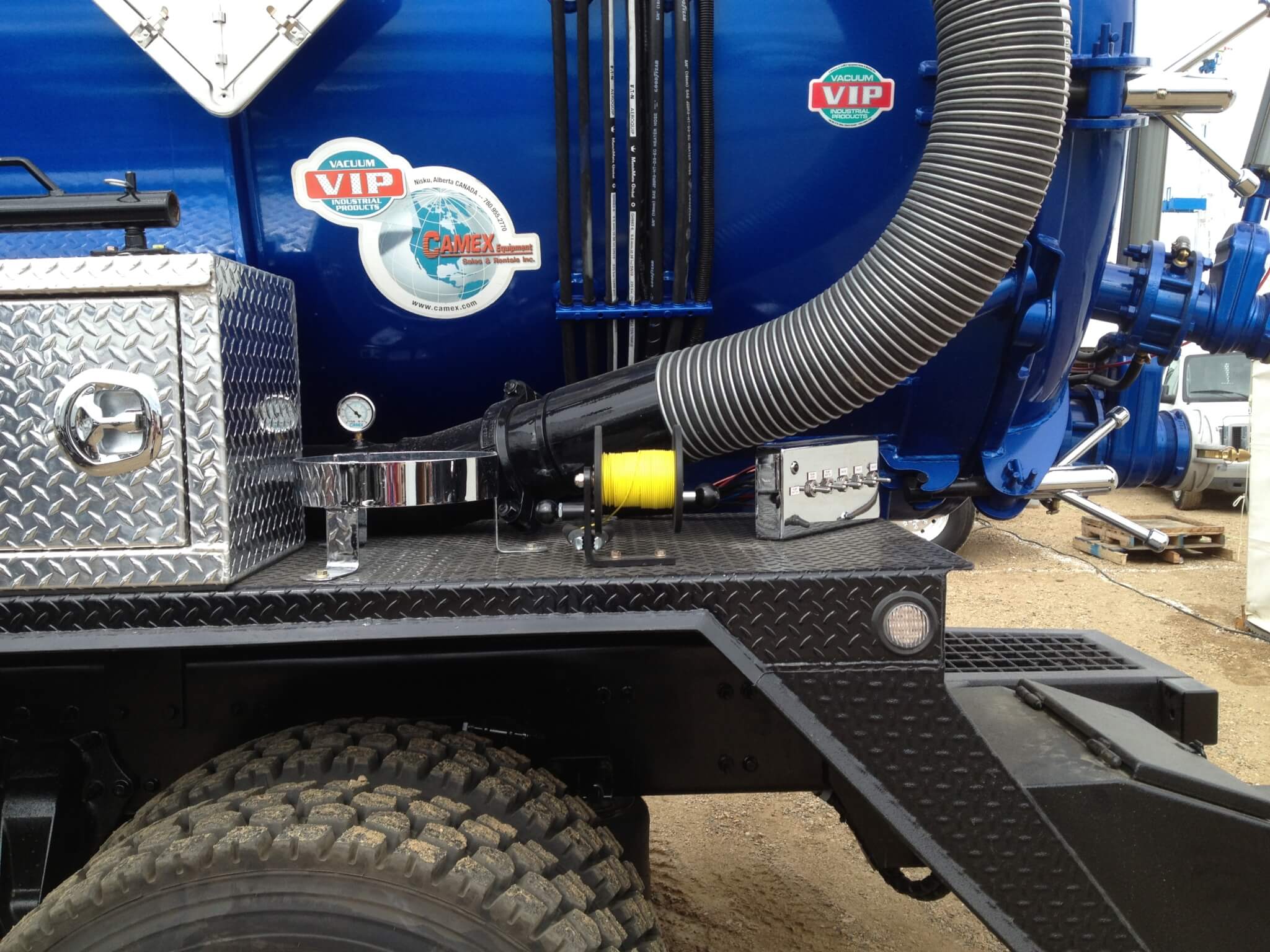

A Motor Shaft Grounding Module (or for short, a MSGM) is a device used to divert harmful electrical voltages away from motor bearings, preventing bearing frosting or fluting and extending the lifespan of the motor.
Aaki motor shaft grounding modules provide a low-resistance path for electrical currents to flow to the ground, rather than passing through the motor’s bearings. This is achieved using a highly conductive copper graphite conductive brush that maintain contact with the motor shaft while the motor is running. For a more detailed explanation of the theory behind its operation, head over to our video area here in our learning center.
Yes, by preventing electrical damage to the motor’s bearings, a MSGM can significantly extend the motor’s operational lifespan, especially in environments shaft currents are generated through the use of Variable Frequency Drives
Variable Frequency Drives are the usual culprit, so any motor that is using some form of speed control is a good candidate for MSGMs.
In these varied applications, MSGMs are instrumental in enhancing motor performance and extending their operational life by preventing electrical bearing damage.
We designed the motor shaft grounding modules to be very easy to install. For shops that expect to install more than a few, we have a number of drill templates, spacers and extensions to help the installer deliver a professional looking product in less time and with less effort.
Its a good question and slightly difficult to answer. The brushes are high quality and made with 70% copper, which typically means they will last a long time: 3 to 10 years is typical and often they will last the life of the motor bearings. There are a few factors that can decrease the longevity of the MSGM.
We recommend performing an inspection on the modules at least monthly for the first 6 months to determine a wear rate. Our proprietary Brush Life Window(tm) on our motor shaft grounding modules makes it easy to quickly check remaining brush life. From there a scheduled inspection and maintenance plan can be developed that will ensure your motor shaft grounding modules perform their function and operate for years.
To maximize the module’s lifespan:
Regular maintenance and monitoring are crucial for the durability and functionality of your MSGM.
We recommend on motors over 5 Hp that two units be installed where possible (one at each end of the motor on both shafts).
Unfortunately, there is no easy way to know or even measure if your electric motor system is generating eddy currents that can damage your bearings. It depends upon many factors such as motor condition, motor load, RPM, grounding conditions, etc. Some electric motor systems can operate for years without a problem and then a change is made to how the system operates or how other systems operate in the plant and the bearings begin to be eroded. The Aaki motor shaft grounding module offers one more level of protection against these costly premature motor failures.
When electric motors are being driven by VFD’s there is a likely chance that the bearings will fail without a MSGM installed.
MSGMs are almost always installed when a motor sent in for repair was being driven by a VFD.
However, many of our customers put these on brand new motors prior to commissioning.
The reason is simple: When a motor fails when on a VFD, its difficult to determine the exact cause. Bearing failures can be a result of poor shaft alignment, improper greasing, contamination of the bearing, overloading of the shaft, out of tolerance speed or load conditions, and Variable Frequency Drive setup.
Regardless of what the culprit was, the motor repair shop is often left holding the bag in an attempt to help out a good customer. So the fractional cost of putting a MSGM on as a failure prevention component will save both the repair shop and the end customer time, reputation, and money.
Basically its cheap insurance.
Since Aaki’s MSGM is designed to be durable, rugged, and easy to install, we have seen it applied in a number of applications. If you think of it as a way to allow electricity to move to or from a rotating shaft, then the use cases open up considerably. Here are a few examples:
Well, we are Engineers, Machinists, Designers and Manufacturers first and Marketing guys second so we are working on it but we aren’t always that quick in that department. Have a good name? Drop us a line…
We build in a window that allows you to look at the amount of remaining brush life on the module. You don’t have to pull the brushes or remove any components to see the remaining brush life. We did this to ease the inspection process.
Aaki motor shaft grounding modules are designed, assembled and tested in Calgary, Alberta, Canada
When mounted to the outside of a motor, Aaki motor shaft grounding modules are not Explosion proof rated. However, we have had some customers mount the modules on the inside of the motor and rely on the Ex rating of the motor housing to do the job.
We have never had one return in the 20 years we have been producing these. Depending upon normal wear and tear, we have sent out repair kits for handles, locking pins, cable and clamps, but the main spools body has turned out to be almost indestructible. Having said that, it’s still important to inspect, test and service them regularly as per your companies maintenance and testing program.
No, some spools are mounted in shops, used for aircraft refueling, rail industry, coal hoppers in paint shops, well heads, anywhere they are pumping or moving any type of fluid that is non-conductive and the static generated can create a fire or explosion.
We have found that the majority of our customers prefer the 12 gauge stranded steel cable with yellow jacket. This cable works well with our 6” spool, providing a compact system for most static bonding applications. However some companies prefer to use a heavier gauge cable. For this purpose we also carry a 4 gauge high strand count copper cable with yellow jacket. This fits well on our 8” spool. The type of spool and gauge of cable would be determined by your company requirements. If you require help in choosing the right setup for your needs, drop us an email or give us a call. We would be happy to help.
There is a 4” distance between flanges and the core is a 2” diameter
Aaki bonding spools are built to handle voltages and currents associated with static electricity. This means that the spool will handle high voltages and very low currents. Grounding applications typically require the device to handle generator voltages (120V to 600V) and currents that may be present during a fault condition (ranging from milliamps to tens or hundreds of amps).
The system design is often fundamentally different. For instance the clamp on a bonding spool is designed to pierce insulating material (such as paint or corrosion). The piercing point has a very small surface area and can’t handle a lot of current. Conversely, clamps for grounding applications often have a large surface area that contacts the grounding pole. This allows the clamp to transfer large currents without overheating.
Bonding is the act of electrically connecting two objects together so that the potential difference between them is close to zero volts.
Grounding is the act of electrically connecting an object to the earth, also known as earthing. Grounding also has the implication that significant currents may be involved, whereas bonding applies mainly to the conduction of very small currents.
Depending whether its on the shelves ready to ship or requires some manufacturing, our products can ship in as little as 5 – 7 business days to process order once placed. From there, standard shipping times apply.
Depending whether its on the shelves ready to ship or requires some manufacturing, our products can ship in as little as 5 – 7 business days to process order once placed. From there, standard shipping times apply.
All Aaki products are warrantied for one year against defects in materials and workmanship.
A Motor Shaft Grounding Module (or for short, a MSGM) is a device used to divert harmful electrical voltages away from motor bearings, preventing bearing frosting or fluting and extending the lifespan of the motor.
Aaki motor shaft grounding modules provide a low-resistance path for electrical currents to flow to the ground, rather than passing through the motor’s bearings. This is achieved using a highly conductive copper graphite conductive brush that maintain contact with the motor shaft while the motor is running. For a more detailed explanation of the theory behind its operation, head over to our video area here in our learning center.
Yes, by preventing electrical damage to the motor’s bearings, a MSGM can significantly extend the motor’s operational lifespan, especially in environments shaft currents are generated through the use of Variable Frequency Drives
Variable Frequency Drives are the usual culprit, so any motor that is using some form of speed control is a good candidate for MSGMs.
In these varied applications, MSGMs are instrumental in enhancing motor performance and extending their operational life by preventing electrical bearing damage.
We designed the motor shaft grounding modules to be very easy to install. For shops that expect to install more than a few, we have a number of drill templates, spacers and extensions to help the installer deliver a professional looking product in less time and with less effort.
Its a good question and slightly difficult to answer. The brushes are high quality and made with 70% copper, which typically means they will last a long time: 3 to 10 years is typical and often they will last the life of the motor bearings. There are a few factors that can decrease the longevity of the MSGM.
We recommend performing an inspection on the modules at least monthly for the first 6 months to determine a wear rate. Our proprietary Brush Life Window(tm) on our motor shaft grounding modules makes it easy to quickly check remaining brush life. From there a scheduled inspection and maintenance plan can be developed that will ensure your motor shaft grounding modules perform their function and operate for years.
To maximize the module’s lifespan:
Regular maintenance and monitoring are crucial for the durability and functionality of your MSGM.
We recommend on motors over 5 Hp that two units be installed where possible (one at each end of the motor on both shafts).
Unfortunately, there is no easy way to know or even measure if your electric motor system is generating eddy currents that can damage your bearings. It depends upon many factors such as motor condition, motor load, RPM, grounding conditions, etc. Some electric motor systems can operate for years without a problem and then a change is made to how the system operates or how other systems operate in the plant and the bearings begin to be eroded. The Aaki motor shaft grounding module offers one more level of protection against these costly premature motor failures.
When electric motors are being driven by VFD’s there is a likely chance that the bearings will fail without a MSGM installed.
MSGMs are almost always installed when a motor sent in for repair was being driven by a VFD.
However, many of our customers put these on brand new motors prior to commissioning.
The reason is simple: When a motor fails when on a VFD, its difficult to determine the exact cause. Bearing failures can be a result of poor shaft alignment, improper greasing, contamination of the bearing, overloading of the shaft, out of tolerance speed or load conditions, and Variable Frequency Drive setup.
Regardless of what the culprit was, the motor repair shop is often left holding the bag in an attempt to help out a good customer. So the fractional cost of putting a MSGM on as a failure prevention component will save both the repair shop and the end customer time, reputation, and money.
Basically its cheap insurance.
Since Aaki’s MSGM is designed to be durable, rugged, and easy to install, we have seen it applied in a number of applications. If you think of it as a way to allow electricity to move to or from a rotating shaft, then the use cases open up considerably. Here are a few examples:
Well, we are Engineers, Machinists, Designers and Manufacturers first and Marketing guys second so we are working on it but we aren’t always that quick in that department. Have a good name? Drop us a line…
We build in a window that allows you to look at the amount of remaining brush life on the module. You don’t have to pull the brushes or remove any components to see the remaining brush life. We did this to ease the inspection process.
Aaki motor shaft grounding modules are designed, assembled and tested in Calgary, Alberta, Canada
When mounted to the outside of a motor, Aaki motor shaft grounding modules are not Explosion proof rated. However, we have had some customers mount the modules on the inside of the motor and rely on the Ex rating of the motor housing to do the job.
We have never had one return in the 20 years we have been producing these. Depending upon normal wear and tear, we have sent out repair kits for handles, locking pins, cable and clamps, but the main spools body has turned out to be almost indestructible. Having said that, it’s still important to inspect, test and service them regularly as per your companies maintenance and testing program.
No, some spools are mounted in shops, used for aircraft refueling, rail industry, coal hoppers in paint shops, well heads, anywhere they are pumping or moving any type of fluid that is non-conductive and the static generated can create a fire or explosion.
We have found that the majority of our customers prefer the 12 gauge stranded steel cable with yellow jacket. This cable works well with our 6” spool, providing a compact system for most static bonding applications. However some companies prefer to use a heavier gauge cable. For this purpose we also carry a 4 gauge high strand count copper cable with yellow jacket. This fits well on our 8” spool. The type of spool and gauge of cable would be determined by your company requirements. If you require help in choosing the right setup for your needs, drop us an email or give us a call. We would be happy to help.
There is a 4” distance between flanges and the core is a 2” diameter
Aaki bonding spools are built to handle voltages and currents associated with static electricity. This means that the spool will handle high voltages and very low currents. Grounding applications typically require the device to handle generator voltages (120V to 600V) and currents that may be present during a fault condition (ranging from milliamps to tens or hundreds of amps).
The system design is often fundamentally different. For instance the clamp on a bonding spool is designed to pierce insulating material (such as paint or corrosion). The piercing point has a very small surface area and can’t handle a lot of current. Conversely, clamps for grounding applications often have a large surface area that contacts the grounding pole. This allows the clamp to transfer large currents without overheating.
Bonding is the act of electrically connecting two objects together so that the potential difference between them is close to zero volts.
Grounding is the act of electrically connecting an object to the earth, also known as earthing. Grounding also has the implication that significant currents may be involved, whereas bonding applies mainly to the conduction of very small currents.
We often receive texts, emails, pictures and videos from our customers. They have used our products to solve a customer challenge, and then sent us their solutions.
Through the use of years of practice and highly developed skills, specialized tools and techniques, our customers tackle tough challenges and come out victorious. We want to celebrate those wins with them and share their successes with the rest of the community.
This is the place to do just that.
Feel free to send me your story any way you want. I will make sure it gets put up here for others to see your handiwork. Feel free to be anonymous or promote your company here. We want you to be successful with our products and help as many as we can. If you are new to the industry, feel free to poke around in here and ask questions. There are decades of experience in this area and someone will have an answer for you.
Thanks for looking. Enjoy!
Aaki is committed to nurturing a culture that strives for the relentless pursuit of value to our customers through the quality, service and integrity of our people and products.
Established in 1986 by its current principal, Aaki Corp has been providing design, development and manufacturing services to a wide range of industries. As Aaki’s reputation for service and quality offerings grew, employees and consultants were added to the group to provide depth and breadth to the company’s capabilities.
Aaki offers services and expertise in a diverse cross-section of industries including: oil and gas, seismic, mining, surveying, forestry, agriculture, and automotive.
Clientele vary in size from one man start-up companies to multi-billion dollar corporations spanning the globe.
On a solid foundation of electrical and mechanical engineering disciplines, Aaki’s services have expanded to include product lines in Motor Shaft Grounding, Anti-Static Bonding Spools, Overfill Prevention and grounding, Clamp and Cable Assemblies, Seismic Components, Corrosion Testing Coupons, MWD components, Mechanical Design, Machining and Fabrication, Electronics Assembly, and Plastic Injection Molding.
At Aaki, we strive to find a better way.
It starts with a continuous cycle of creative and innovative designs and improvements, forged using superior materials, to create a product that is carried to the customer with best in class service, all with the goal to provide the best value possible.
And when we have achieved that,
We start again, looking for a better way.
Quality, Service, Integrity and Value. The Aaki way.

Be First To Find Out About Our News And Promotions.
Copywrite © 2023 Aaki Corp. All rights reserved.